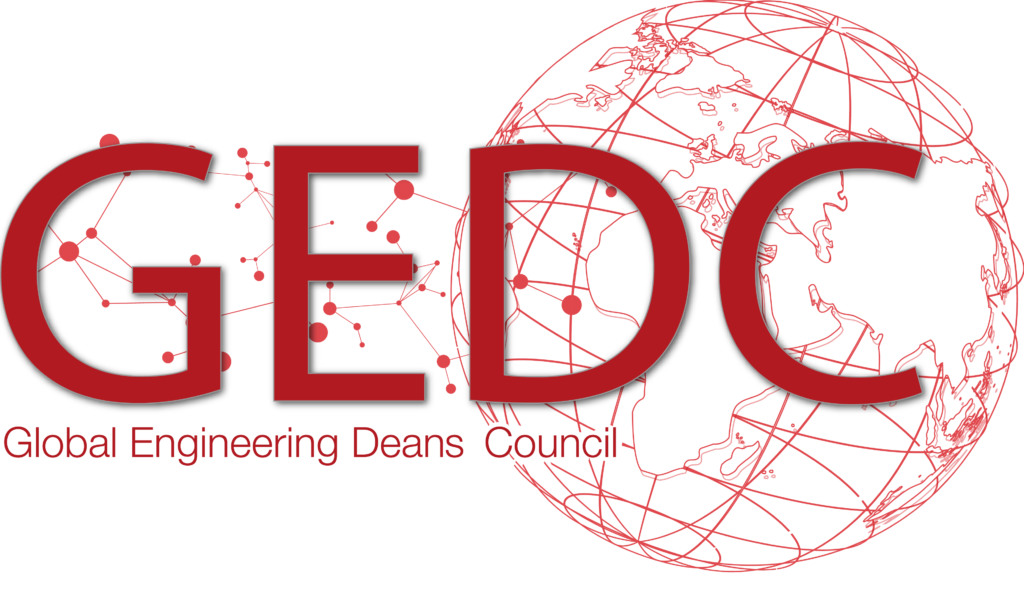The WHY
There are urgent calls to action by the NAE1, the Nobel Prize Summit2, the UN3 and global scientists4 to address and solve, in this decade (2020 – 2030), crucial and widely recognized global challenges to peace and security before they become more complex and more environmentally, financially, and socially costly; before we reach the point of no return.
The WHAT
Peace Engineering is the application of STEAM5 principles, sustainable practices, cultural sensitivity and innovation to promote and support peace6. It recognizes the important contribution that engineering, the hard and social sciences and other disciplines such as law and finance make toward a world where prosperity, sustainability, security, transparency and a culture of equity and quality thrive. UNM’s Peace Engineering Biome is a transdisciplinary, multi-institutional center charged with leading the Peace Engineering movement nationally and globally.
The HOW
On October 28th, 2021 the University of New Mexico, Sandia National Laboratories7 and the Peace Engineering Biome hosted a kickoff workshop to introduce Peace Engineering to a broader audience and grow the Peace Engineering Consortium, a collective tasked with developing and disseminating knowledge, tools and talent to influence peace efforts globally8. The workshop focused on the high priority topical areas of 1) Climate Security; 2) Life Sustainable Infrastructures; 3) Materials & Sustainability; 4) Complex Systems Modeling and 5) Global Security and Cooperative
Monitoring9. Approximately 70 attendees from universities, DoE National Laboratories, industry, and the government participated in presentations and discussions to achieve the following near and long-term goals:
Near term goals:
• Enhance Peace Engineering academic programs
• Identify joint R&D activities
Long term goals:
• Maintain and increase momentum and collaboration across Peace Engineering by:
i. Growing Peace Engineering Consortium membership
ii. Building programs in partnership with related networks and communities of interest (e.g.,
Project ECHO10)
The OUTCOMES
Participants felt that Peace Engineering is critical in the present and future. In a survey of workshop attendees, the majority of respondents felt that the themes and goals of Peace Engineering were already a part of more than half of their current work. When asked how valuable they thought Peace Engineering would be to their future work, all saw value in it, and the plurality reported that it would be “invaluable.”

Clearly, there is both an acknowledged current need for and capacity to provide cost-effective, efficient solutions to the ecological, cultural, and economic challenges that face our planet today… but the people who work in these spheres also know that current awareness is not enough. These problems will remain for us to address tomorrow as well, and Peace Engineering is a path that can bring our current capabilities to bear on the complex problems of the present and future. Discussion at the workshop and polling of attendees indicated that the synergy between sustainable development and security programs necessary to tackle the problems we face as a global community – a synergy facilitated by PENG – can be specifically facilitated in the following ways:
Peace Engineering will be advanced by transforming engineering education
Engineers are generally taught to work toward the most cost effective, most efficient solution to a technical problem. Peace Engineering applies this same training and mentality with emphasis on ecological considerations, cultural and economic sustainability and resilience, inclusivity, social equity, and global partnerships to mitigate conflict. First, we must review and expand existing curricula and practices to educate future engineers to be both technically astute and literate in multiple relevant disciplines. They must have the technical depth required for engineering and must also be educated and exposed to other STEM fields, the social sciences, the arts, and applied disciplines such as diplomacy, health, law, and business. To achieve this, we will 1.) Establish a baseline Body of Knowledge (BoK) for Peace Engineering education and practice that institutions can use as a guide when creating Peace Engineering programs, and 2.) Work with ABET and other organizations to accredit PENG program(s). The BoK will advise on transformative program content, curricula, service learning, certificates, internships and continuing education. It will emphasize the ethics and attention to social and environmental contexts that are necessary to achieve awareness of both intended and unintended consequences of technology and engineering solutions.
Second, Peace Engineering education has great potential to enrich the engineering talent pipeline by attracting diverse students interested in creating change and having a positive impact. To achieve this, it is critical to identify and emphasize attributes of PENG education that make it desirable to employers, and to provide entry points and ongoing education to professionals at every level.
Peace Engineering must be transdisciplinary
To create successful, sustainable peace solutions to the complex problems we face presently and in the future, engineers must draw on the expertise of other disciplines including social and community-based psychology, anthropology, sociology, medicine and law (and in turn these disciplines should be exposed to engineering), and work with the finance and business communities on comprehensive models for risk, mitigation, transparency and return on Peace Engineering initiatives. The Biome will strive to integrate these multiple disciplines to address global issues including but not limited to climate change, rapid urbanization, and population growth and migration.
Partnerships and collaboration are essential
Achieving PENG goals of peace and security requires collaboration within and across partner institutions – from academia, research & development laboratories, industry, government, NGOs, multilateral organizations and others. In a survey completed by workshop attendees, almost every respondent indicated interest in some type of collaborative project in at least one of the five topical areas of the workshop. Evocative of the larger trend, one participant wrote, “I have spent decades trying to bring together cross-disciplinary activities (with significant frustration), and PENG provides
a forum for like-minded and aware persons and programs to collaborate.” These collaborations enable members to build on each other’s efforts and force multiply peace outcomes and impacts. As well, we need to collaborate with global partner academic institutions in joint education and research projects.
“I have spent decades trying to bring together cross-disciplinary activities (with significant frustration), and PENG provides a forum for like-minded and aware persons and programs to collaborate.”
It is important that the Peace Engineering approach embrace community, culture, and individuals
To deploy new and enduring solutions that are context- and scale-specific, Peace Engineering embraces community, culture, and individuals, and the Biome will specifically make its transdisciplinary approach community-defined – listen first, apply technology second.
Peace Engineering should inform diplomacy and policy-making
The Biome will strive to establish and emphasize the roles and contributions of engineers and scientists in diplomacy and policymaking. This includes promoting science, technology and engineering literacy in policy makers, and increasing diplomacy and policy literacy in scientists, technologists, and engineers.
In addition, as systems engineers, PENG practitioners support policy-making by implementing complex, holistic systems models to measure, analyze, model and predict the dynamic interactions of peace interventions, including factors that are often in tension such as peacebuilding and conflict management, security and development, trust and misinformation, corruption and civil unrest, climate change and migration. These models and tools, which can capitalize on digital repositories, open-source data and open source intelligence, include standards for measuring peace and its derivatives, situational awareness maps and early warning systems. These tools can assist diplomats, policy makers and the business community in designing and implementing strategies to anticipate and address problems with sustainable solutions that promote human security and wellbeing.
Foster Peace Engineering R&D, Peace-Tech and entrepreneurship
We must identify R&D and entrepreneurship opportunities that promote peace and security, sustainability, well-being, and equity, implementing tenets of the circular economy11. These opportunities should cultivate a marketplace for technologies that support peace (Peace-Tech) through ESG (Environmental, Social and Governance) finance metrics12 and global soft landings13 that will accelerate and leverage both global innovations and marketplaces for these high-impact products and services. The ultimate vision is to foster a self-sustaining Peace Industrial Complex14,15 where
economic impact and return on investments in Peace-Tech can be measured consistently and predictably for global sustainability16.
The NEXT STEPS – How we are transforming ideas into action
Peace Engineering Academic Programs
Drexel University established the first Peace Engineering Master’s degree program in the US in 2018. The University of New Mexico began offering a Peace Engineering Undergraduate Minor program in 2020, is growing its MS and PhD programs and is creating a fully online MS degree in collaboration with the Peace Engineering Consortium. The online MS degree will be offered starting in the 2022-2023 academic year. Certificate programs and micro-credentials will also be offered at this time. The programs should be of interest to a wide range of individuals such as students, policy makers, and practitioners. The Peace Engineering Consortium will provide a framework for Peace Engineering education and practice that institutions can use as a guide when creating Peace Engineering programs.
Topical Working Groups
As a follow-up to this workshop, we will host a sequence of working group sessions, addressing these topic areas 1) Climate Security; 2) Life Sustainable Infrastructures; 3) Materials & Sustainability; 4) Complex Systems Modeling and 5) Global Security and Cooperative Monitoring with the goal of identifying significant, achievable, immediate, and sustainable actions that we will take now. Each topical working group will address:
• Curriculum: Peace Engineering educational programs including the development of curricula for undergraduate minor programs, expanding existing MS and PhD programs, and developing certificate programs that will provide PENG-relevant micro-credentials.
• Outreach: Development of outreach activities including community partnerships and participatory projects, and audience-specific marketing ventures to facilitate recruitment of PENG practitioners and expand awareness of its mission and capabilities.
• Partnerships and Sponsors: Identification of key partnerships and sponsors through strategic development. This involves reviewing short, medium, and long-term opportunities with both local and global scope.
To learn more, please visit: https://www.ifees.net/peace-engineering/











